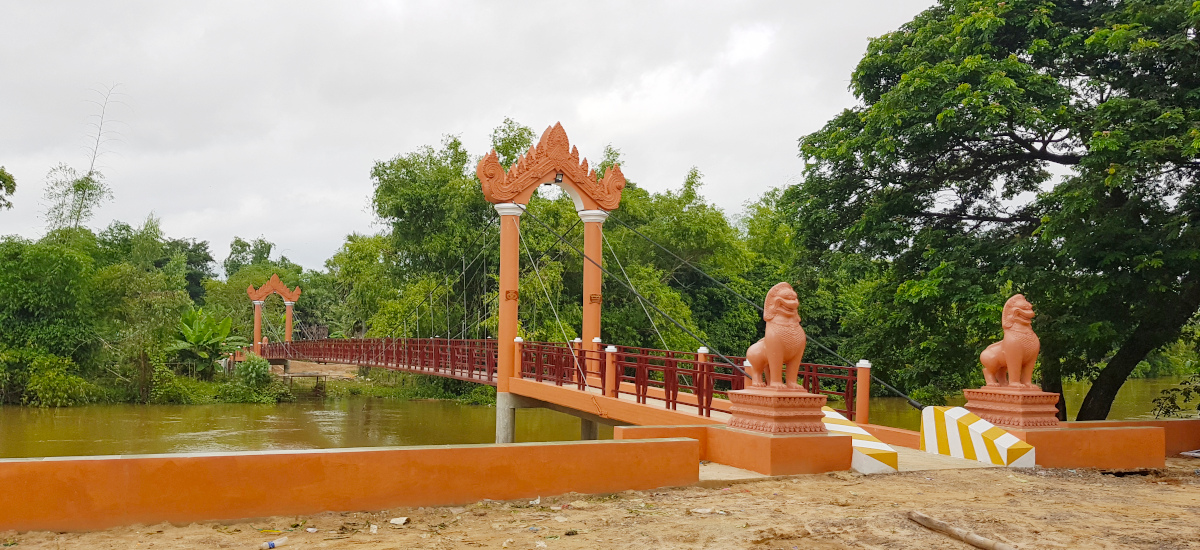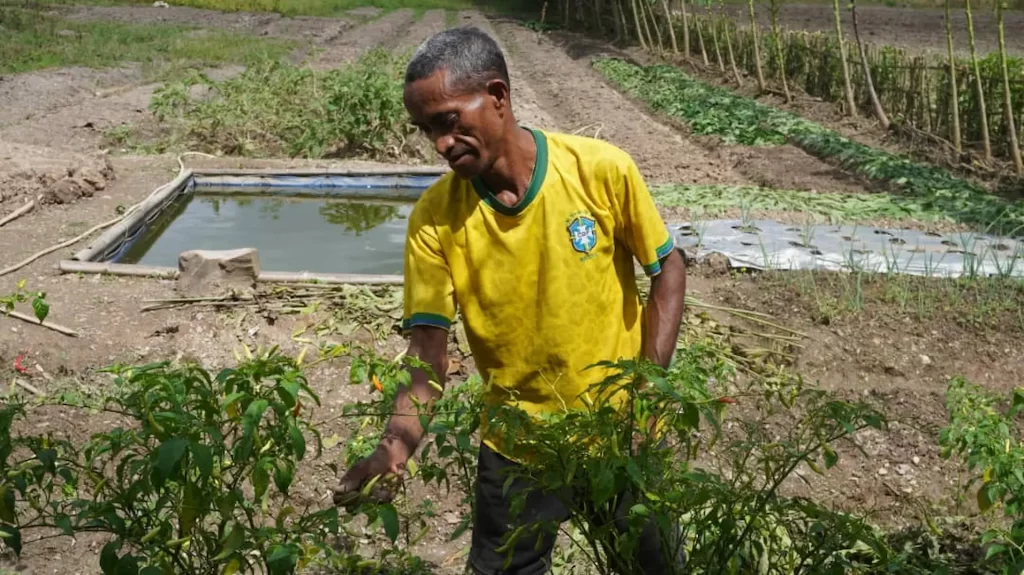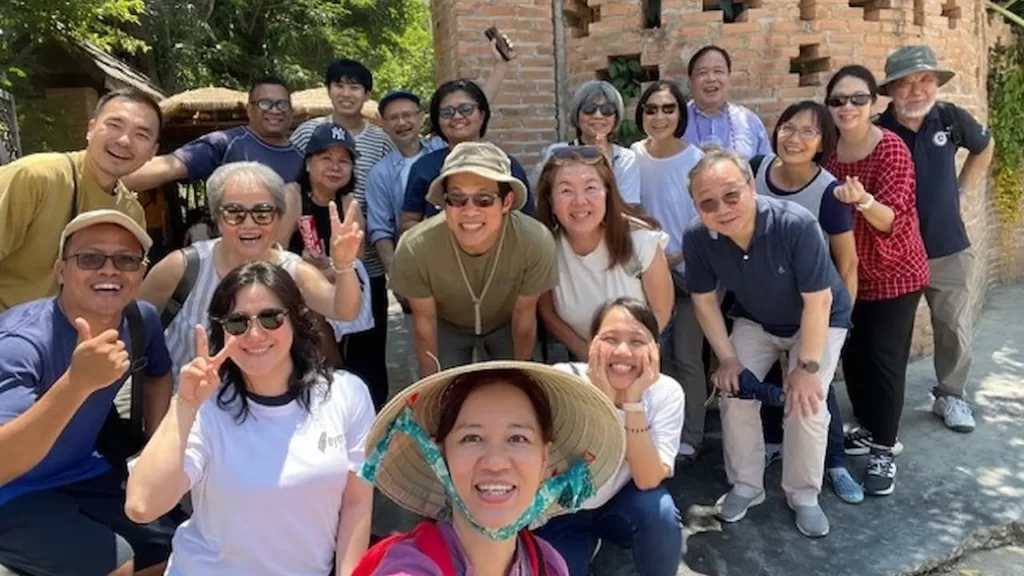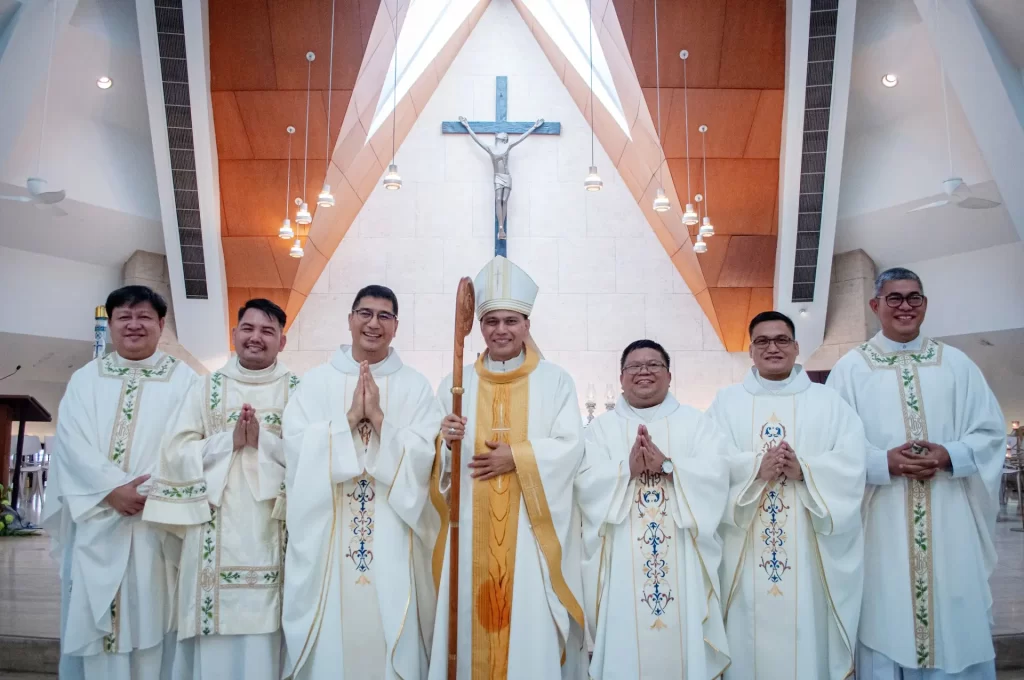
Established in the middle of rice fields over a 100 years ago by the Missions Étrangères de Paris, the small church has seen a renaissance in recent years with its careful restoration and growing community. It survived the Khmer Rouge regime with the scars to prove it: marks on the walls from machine guns. It was used as a barn and a rice mill, and by the 1990s it was abandoned and fell into disrepair. After the war, the church was turned over to the tiny population of Catholics in the area who managed to salvage it.
Near the church, the river flows into the great Tonle Sap Lake, the largest body of freshwater in Southeast Asia. Its rich resources from the beginning attracted human settlement and gave birth to early Khmer civilisation. In its ancient temples, stone carvings depict river life along with its flora and fauna. To this day, the lives of villagers from both sides are inextricably linked to the river–they use it for travel, commerce and communication. This is where they bathe and wash their clothes, the children come after school to wash their muddy feet.
The parish priest of St John the Apostle Catholic Church in Siem Reap, in the Apostolic Prefecture of Battambang, is Filipino Jesuit Fr Jose Hildy Banaynal. Fr Totet, as he is known throughout the parish, saw the need to connect the communities on each side of the river in Siem Reap and Banteay Meanchey. “It has been my dream since 2015–when I became the parish priest in charge–I saw the need to extend our services to the other side of the river, which belongs in another province,” says Fr Banaynal. “Before the war, people would come to church in their boats but now we don’t see it that much anymore, so the communities were separated.”
Around 7,000 people live in seven villages near the church, but the river made it difficult to access. The village leaders identified the need for a bridge to connect their communities and that village life would benefit significantly from it. A bridge would make it possible for the church to reach out to more people and extend social and education services such as house repair assistance, visit and medication for the sick, hygiene and sanitation training for mothers, guidance for mothers, care of the elderly, and care and formation of the children. A bridge would also enable the people to easily visit the temples–Wat Bat Trong, Wat Tonlop, and Wat Sambor–during feast days.

Fr Banaynal then set about raising the funds needed to build. Through Jesuit Mission Australia, a donor decided to fund a large portion of the bridge’s construction. “Later on, I realised that we had to raise more for the foundation wall and, to enhance community life, the steps. That is why we also asked our friend in Singapore who, with her friends, promptly donated the rest,” Fr Banaynal says. “The Lord has been very good. I really feel that the Lord wanted us to have the bridge. It was so easy for us–for it to happen.” Even for the church renovation, the same friend in Singapore covered the cost. “That’s the fruit of the mission. I always trust that the work of the mission belongs to God. The Lord will provide. The donors are fellow missionaries,” he says.
Resources came not only from private donors in other countries but the villagers themselves, and even the contractor who donated his professional services to the project. Mr Rithy, who wants to become a Catholic, told Fr Banaynal that he considers it his apostolate to help the church. “He has been working with us since 1995,” says Fr Banaynal. “He dedicated the bridge, made it really beautiful, working with us on the design. He said, ‘Father, I propose that we call this the Bridge of Happiness because this bridge is bringing joy and happiness to people on both sides.’”
The bridge was built despite the pandemic. Started in March 2020, it was near completion by September. It opened quietly to the public on 4 October, the feast of St Francis of Assisi–a date that coincided with the release of the papal encyclical Fratelli Tutti. “A bridge is a beautiful symbol of collaboration, of helping each other, of collaboration between religions. Especially now, with the letter of Pope Francis on brotherhood, on friendship,” says Fr Banaynal.
With decades as a missionary working in Cambodia and its predominantly Buddhist population, he says they are “very open people. Their attitude in life is welcoming. It’s a very welcoming religion and a very welcoming culture.” Fr Banaynal knows to build something beautiful was important. “Cambodians are very good with architecture; they make beautiful things. It enhances their dignity to have this place,” he says. “As a missionary, you have to think of creating a beautiful atmosphere for people. Not necessarily to make them Christians… the most important thing is to create communities, to give them a sense that the church is facilitating joy in their lives.” He calls the bridge “a beautiful place… that makes the community.”
An old man from the Siem Reap side reached the church by asking his grandson to drive him on a motorbike to see the bridge. “He was so excited that the two places are now connected,” says Fr Banaynal. He continues: “On the other side of the bridge is a poor woman’s house. She said, ‘Before, I used to go to the church every Sunday. We joined the Mass.’ I was so surprised to hear this. She said, ‘I know the church. I knew the sisters there before, when we were children.’ People are remembering the old times when they would hear the bell ringing, even on the other side. They know that the church is here. They are Buddhists, but they have good memories of the church.”
Fr Banaynal adds: “This is the beauty of being a missionary. In that moment when you are feeling your way and wondering what you are doing here at all. I don’t look at my work in terms of how many baptisms we have; rather, It’s about inculturation and interreligious dialogue. It’s about teaching the Gospel in a way that makes people understand it in their lives and culture.”
He says planting the seeds of friendship and joy for the people is what they are doing. “We don’t know what the future of the mission will be, but I know that people who come to us, they will be cared for with loving kindness. They will live with values of mercy, justice, and care for each other and the natural world. Together – as Buddhists and Christians – we will hopefully make a better world – a world that brings religions together, a world that reconciles communities and families to each other, a world that bridges people unto themselves – and with God, the Father of us all, whose happiness is our strength.”
This article was first published in “The Jesuits in Asia Pacific 2021”. To download the report click here.






